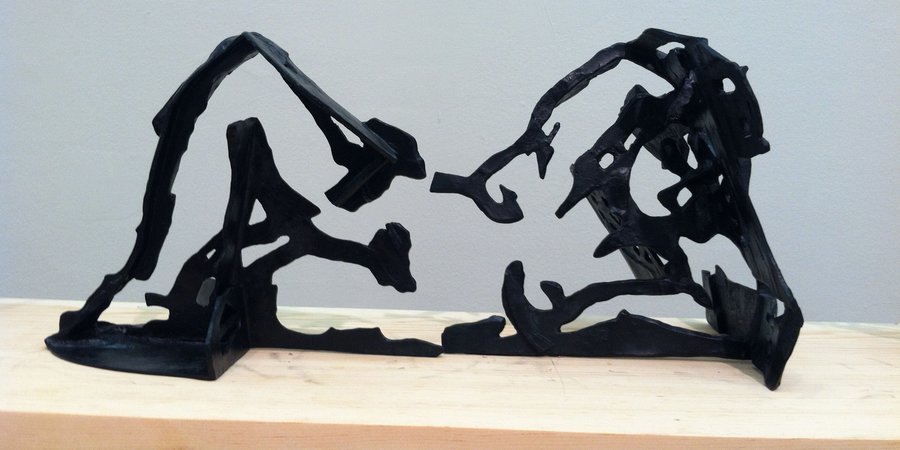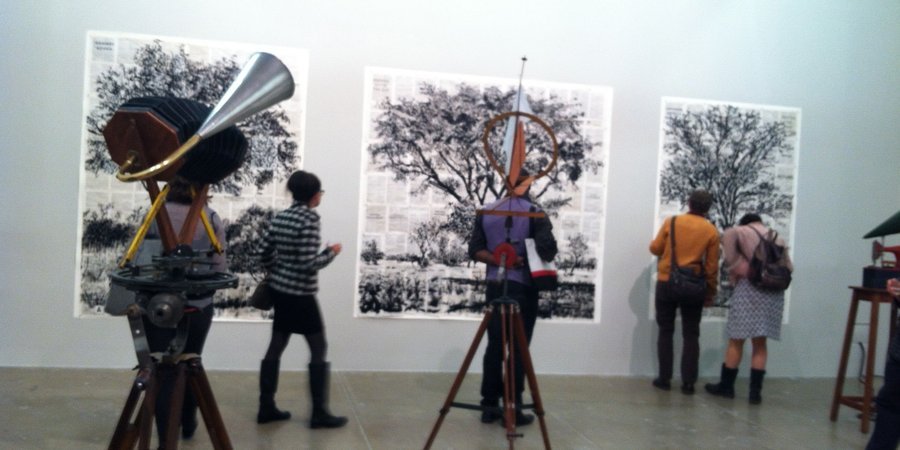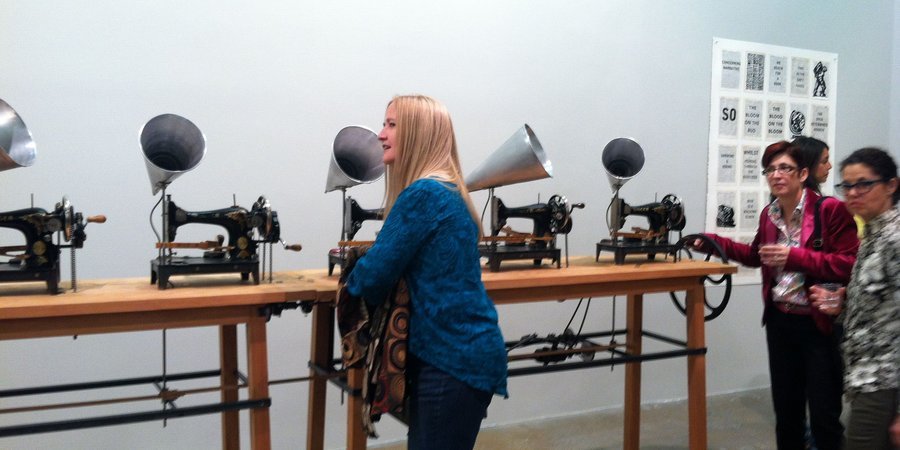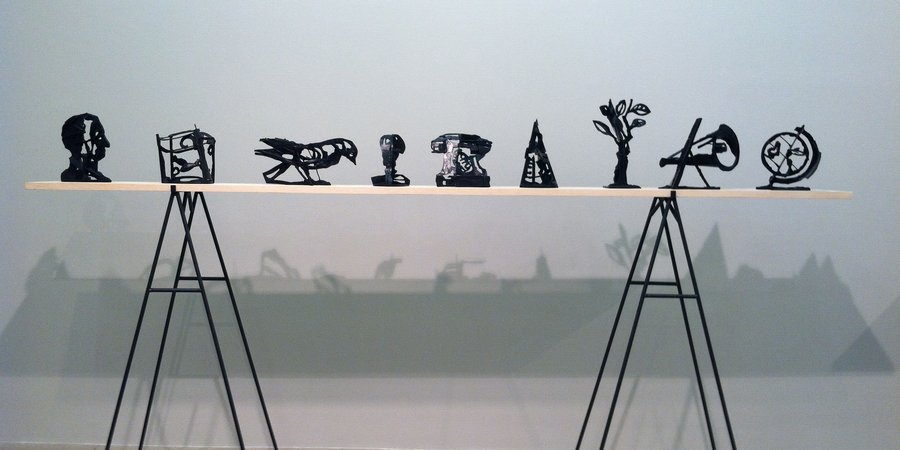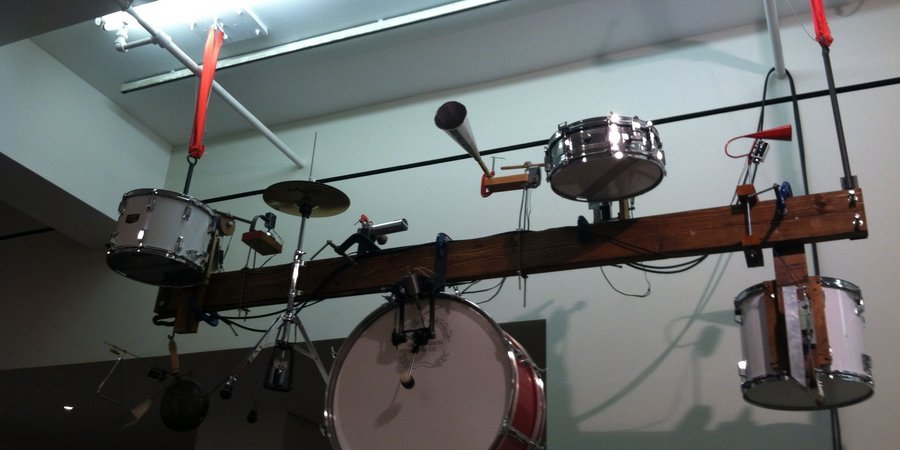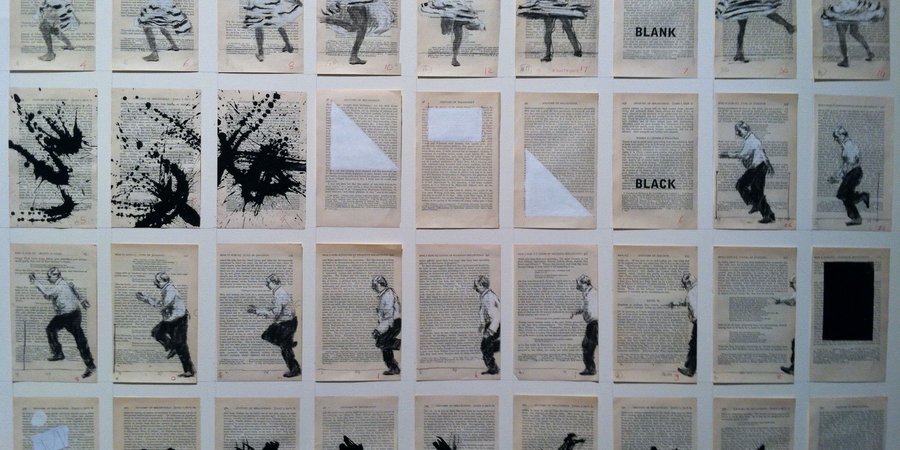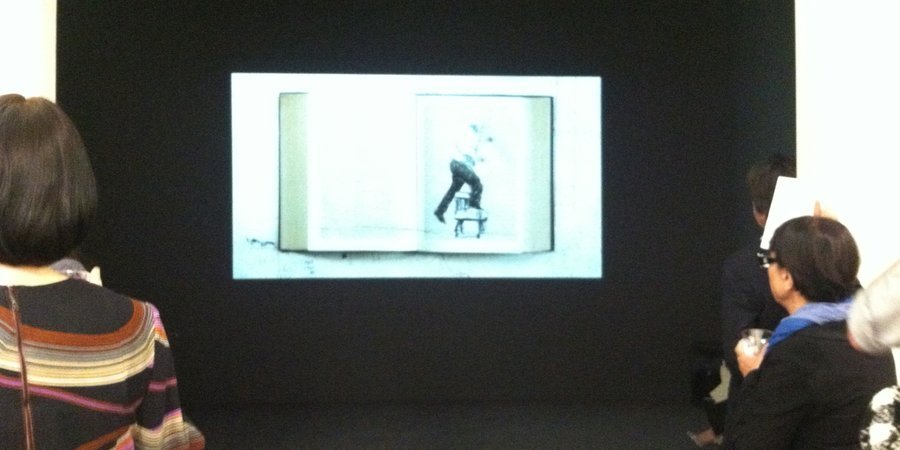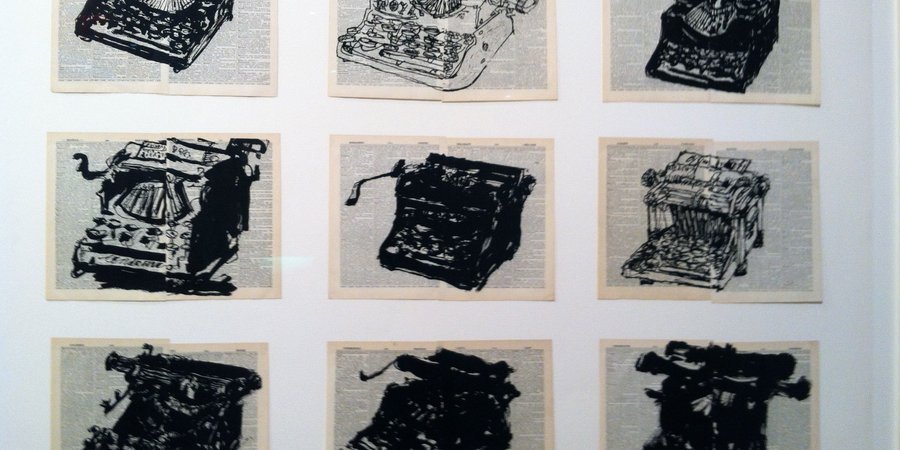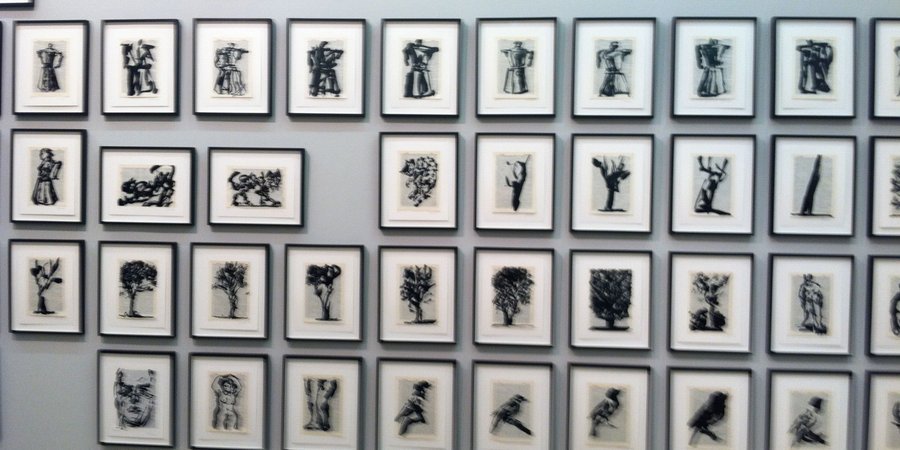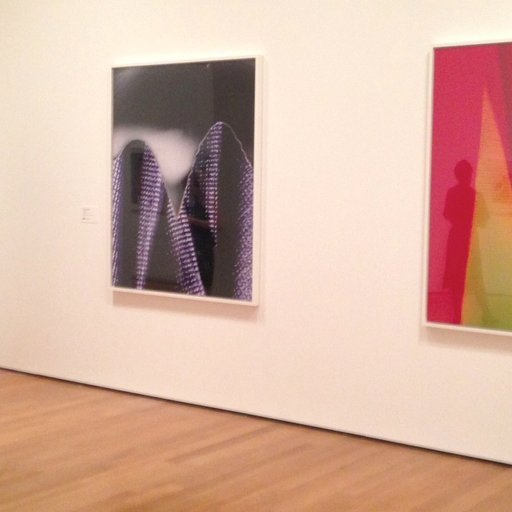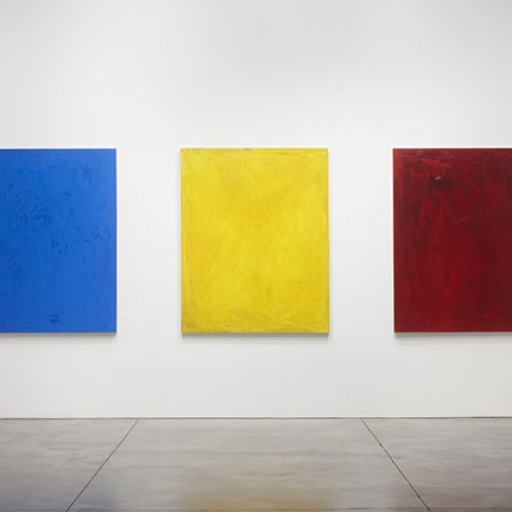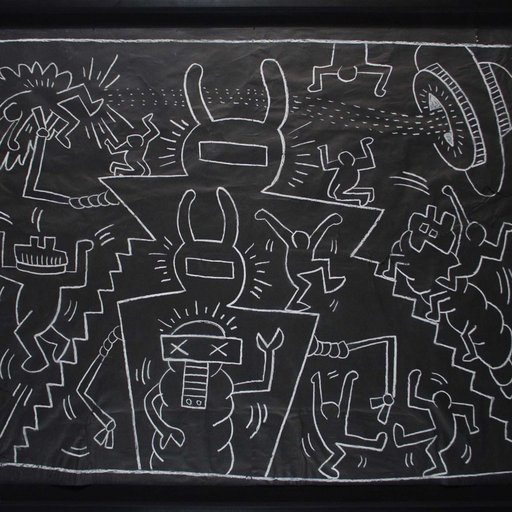Entering Marian Goodman for William Kentridge’s new exhibition “Second-Hand Reading,” one is greeted by a cacophony of beats emitted from a drum rack overhead. Megaphone sentinels are scattered throughout the gallery, and a contraption made out of found sewing machines with megaphones strapped to the top can be cranked from the back to create music. These kinetic, aural sculptures (which originated as part of Kentridge’s display at dOCUMENTA 13) have been paired with new ink drawings, film, sculpture, and linocuts, in which Kentridge often takes his source materials and transforms them into works layered with multiple “readings.”
The megaphones appear alongside large India-ink-on-paper works in which Kentridge has drawn spindly, indigenous African trees over torn-out pages of the encyclopedia. His 2013 “Rebus” series of bronze sculptures, when viewed from a certain angle, reveal two different images within what we initially see. In another series, the artist has used medical texts as drawing paper to create flipbook-like scenes—of a man running, of a couple’s romance—often overlaid with patterns of ink platters or paper cutouts. The works almost solely use black, white, and gray, as if in imitation of the textual elements they play off.
In his artist’s statement for the show, Kentridge sees the works as “the requisitioning of old forms for new uses.... Encyclopedias are supports for drawings, sewing machines and a bicycle become sculpture. Words as provocations towards meaning rather than clear syllogisms: the phrases in the drawings push us to make some sense; the Rebus sculptures as hieroglyphs, placed in a line like a line of letters or words or syllables which can be rearranged to make new sentences.” One could seemingly spend hours reading and rereading the range of meanings here, from literal text to more opaque symbols waiting to be uncovered.
To see images from "Second-Hand Reading," click the slide show above.











